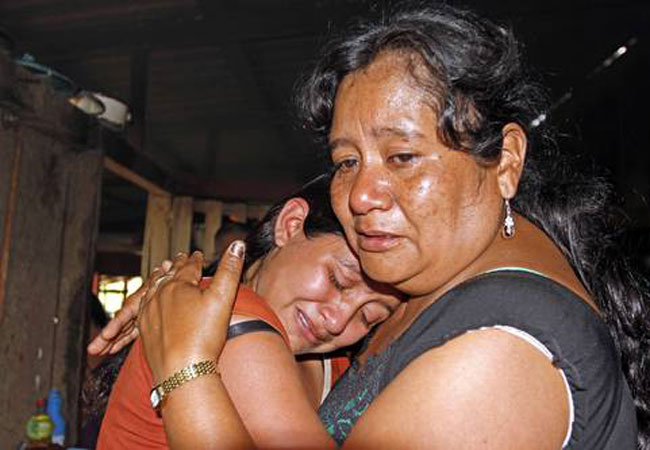By Fred Pearce / Yale Environment 360
Where is Sombath Somphone? With every day that passes, the fate of one of south-east Asia’s most high-profile environmental activists, who was snatched from the streets of Laos in December, becomes more worrisome.
His case has been raised by the State Department and countless NGOs around the world. But the authorities in Laos have offered no clue as to what happened after Sombath was stopped at a police checkpoint on a Saturday afternoon in the Lao capital of Vientiane as he returned home from his office. It looks increasingly like state kidnap — or worse, if recent evidence of the state-sponsored killings of environmental campaigners in other countries is anything to go by.
Personal danger is not what most environmentalists have in mind when they take up the cause of protecting nature and the people who rely on it in their daily lives. But from Laos to the Philippines to Brazil, the list of environmentalists who have paid for their activism with their lives is growing. It is a grim toll, especially in the last year.
One of the most grisly cases occurred last year in Rio de Janeiro on the final day of the Rio+20 Earth Summit. On the afternoon of June 22, delegates from throughout the world — me included — were preparing to leave for the airport as Almir Nogueira de Amorim and his friend João Luiz Telles Penetra were setting sail for a fishing trip in the city’s Guanabara Bay.
The two men, besides being fishermen, were leaders of AHOMAR, the local organization of seamen, which they had helped set up three years earlier to fight the construction of gas pipelines across the bay to a new refinery run by the Brazilian national oil company Petrobras. The pipelines, they said, would cause pollution, and the engineering works would destroy fisheries.
The issue they were raising — protecting the livelihoods of people who used natural resources — was at the heart of the Rio conference’s agenda for sustainable development. But someone in Rio saw it as a threat. Two days later, the bodies of the two men had been found. One was washed up on the shore, hands and feet bound by ropes. The other was found at sea, strangled and tied to the boat, which had several holes in the hull.
This was no isolated assassination. In the three years since AHOMAR was set up, two other campaigners had been murdered. To date nobody has been convicted of any of the offenses. The refinery is expected to open early next year.
The month before the two Brazilian fishermen were murdered, a civil servant on the other side of the world who was campaigning against a planned hydroelectric dam on the southern Filipino island of Mindanao was shot death. Margarito Cabal was returning home from visiting Kibawe, one of 21 villages scheduled to be flooded by the 300-megawatt Pulangi V hydroelectric project.
Cabal’s assailant escaped and remains unknown. No prosecution has followed, but attention has focused on government security forces. According to the World Organization Against Torture, an international network based in Switzerland that has taken up the case, Filipino soldiers had for several weeks been conducting military operations in and around Kibawe and had attacked peasant groups opposing the dam. If the soldiers did not do the deed, they certainly helped create an atmosphere in which environmentalists were seen as a target for violence.
Cabal is the thirteenth environmentalist killed in the Philippines in the past two years. Seven months earlier, a Catholic missionary was murdered after opposing local mining and hydro projects. “The situation is getting worse,” says Edwin Gariguez, the local head of Caritas, the Catholic aid charity.
And it’s getting worse in other nations as well. NGOs such as Human Rights Watch agree that 2012 was also a new low for human rights in Cambodia, with campaigners against illegal logging and land grabs targeted by state security personnel and by gangsters working for companies harvesting the nation’s natural resources.
One of those campaigners was Chut Wutty, a former soldier and one-time Cambodian activist with Global Witness, a UK-based NGO that highlights links between environmental exploitation and human rights abuses. When Global Witness was expelled from the country a few years ago, Wutty formed the Natural Resource Protection Group to help Cambodian villagers confront illegal loggers.
But last April, Wutty was shot dead, apparently by a group of military police that he encountered while taking local journalists to see illegal loggers in the west of the country. According to a government report, Wutty’s assailant was killed at the scene, allegedly by a forest ranger. A provincial court recently abandoned an investigation into Wutty’s murder and released the ranger. One of the journalists, who fled into the forest when the shooting started, says she does not believe the official version of what happened, and human rights groups have also said they find it implausible.
Criminality is at the heart of much of the destruction of the world’s forests. A recent report from the UN Environment Programme concluded that up to 90 percent of the world’s logging industry was in one way or another outside the law. In such circumstances, violence against those who try to protect the forests can become endemic.
Read more from The Guardian: http://www.guardian.co.uk/environment/2013/feb/21/activism


Canadian mining companies are culpable in deaths such as these. The execs should be held criminally responsible for the actions of their subsiduary companies. They can’t say they don’t know what is going on and expect that to be reason enough to provide them with shelter.